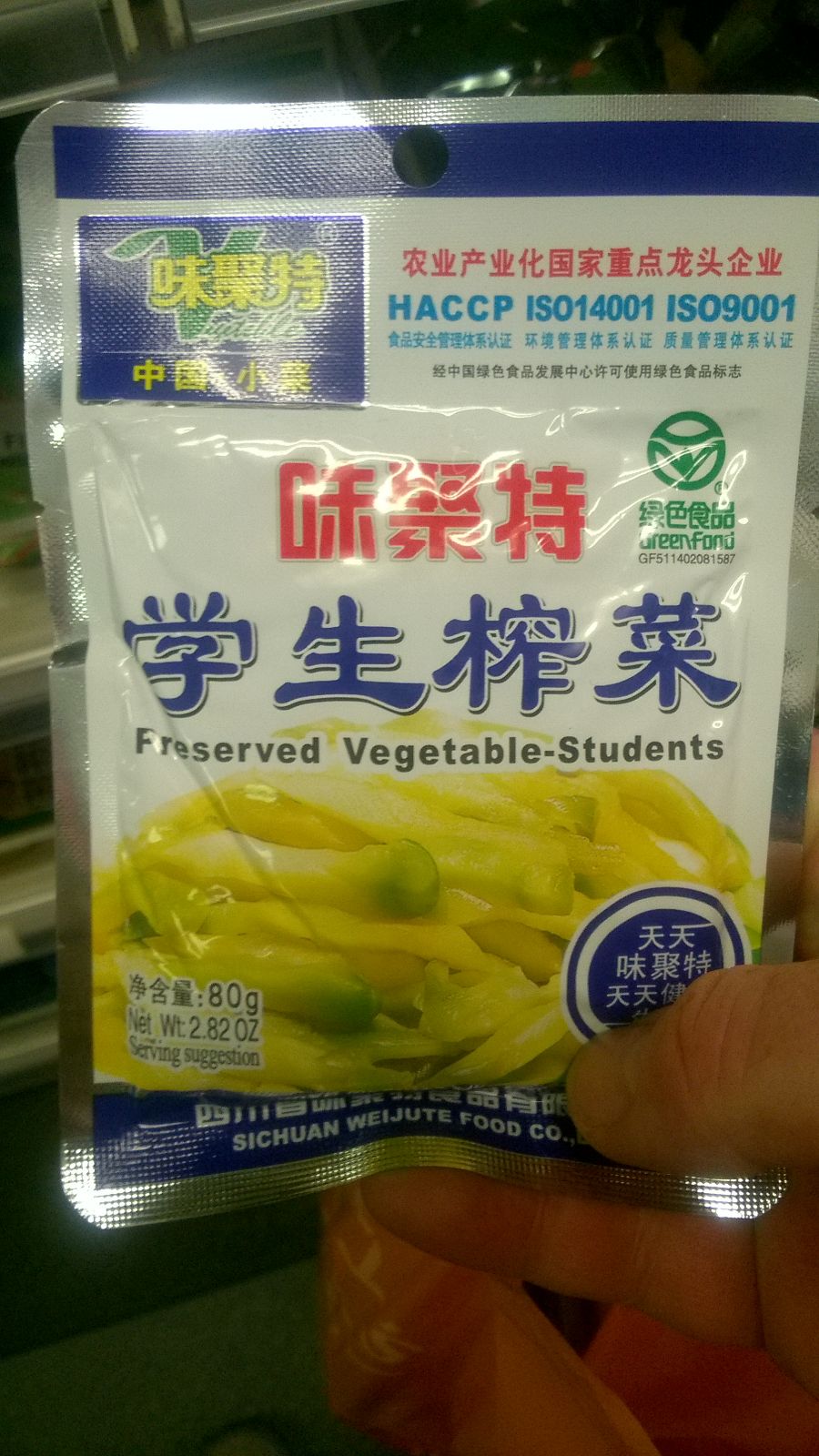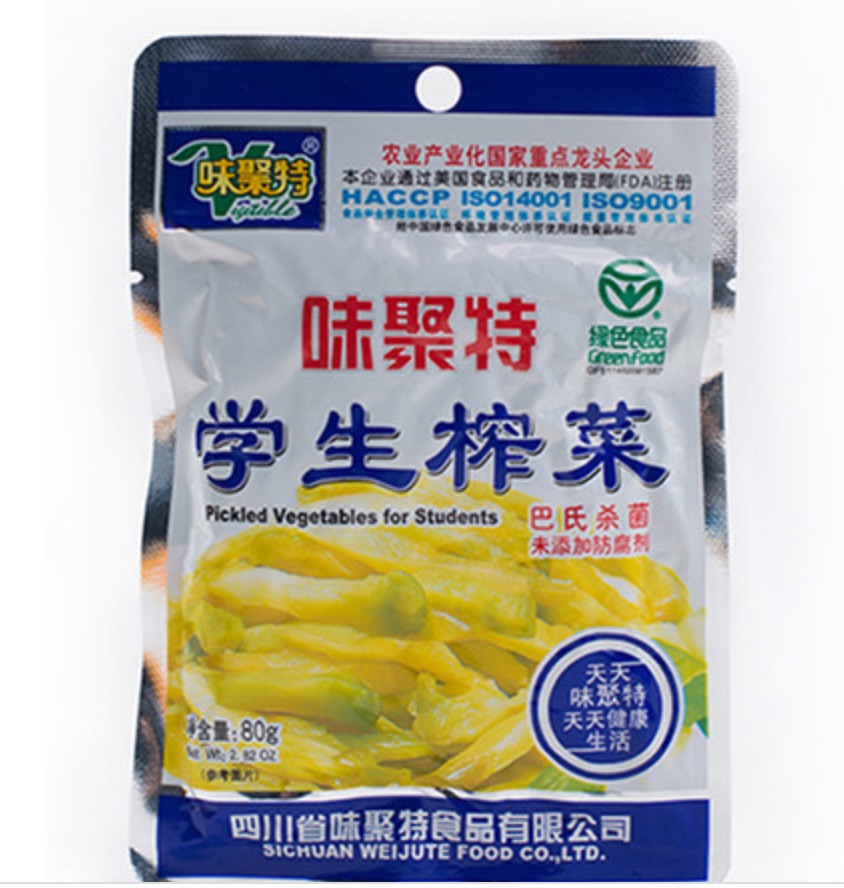Vegetable students
« previous post | next post »
From Simon Martin:
Simon writes:
I suspect the product shown in the above picture is aimed at time/money poor students, but it is all too easy for my anglosaxon eye to read it as implying that it contains vegetable based students.
The product inside that grandiloquently worded package is the humble Sichuan pickled mustard green stem. Here's Wikipedia on the nomenclature:
Zha cai (榨菜 literally "pressed vegetable") is a type of pickled mustard plant stem originating from Sichuan, China. The name may also be written in English as cha tsai, tsa tsai, jar choy, jar choi, ja choi, ja choy, or cha tsoi. In English, it is commonly known as Sichuan vegetable, Szechwan vegetable, or Chinese pickled vegetable, although all of these terms may also refer to any of a number of other Chinese pickles, including the several other types in the Sichuan province itself.
I love zha cai. After soaking and washing, it is a little bit chewy, a tad crunchy, slightly salty, and somewhat spicy — all at the same time. Cut into strips, it adds a pleasant piquancy to whatever dish you put it in. It is indeed a favorite of cash-strapped students, since it simultaneously serves as a vegetable and a condiment.
Wèijùtè 味聚特 (lit., "flavor-assembled / gathered-special"), the brand name, is a rough phonetic approximation of "vegetable" (you may not think so, but that's what it's meant to resemble).
xuéshēng zhàcài 学生榨菜 ("student zha cai ['pickled mustard green stem']", i.e., "pickled mustard green stems for students")
Luckily, someone seems to have told the company about their Chinglish translation, leading them to revise the wording on the package. Below is a picture of the packaging of the Wèijùtè zha cai that's being sold online now.
[Thanks to Jinyi Cai and Jing Wen]


David Morris said,
July 11, 2017 @ 7:00 pm
A few weeks ago a colleague offered me 'Preserved Wife Plum', which three Chinese speaking ESL or translating teachers couldn't explain.
Victor Mair said,
July 11, 2017 @ 10:02 pm
@David Morris:
Those "preserved white plums" are probably like Japanese umeboshi ("pickled plums"). Though they are called plums, they more closely related to apricots.
https://en.wikipedia.org/wiki/Umeboshi
Bái méi 白梅, lit. "white plum", is the Japanese apricot. Plums and apricots, like cherries, peaches, nectarines, and almonds, belong to the genus Prunus.
Umeboshi is another of my favorite condiments, this one being puckeringly salty and sour at the same time.
Victor Mair said,
July 11, 2017 @ 10:05 pm
P.S.: My Chinese surname is Méi 梅.
David Morris said,
July 11, 2017 @ 10:47 pm
Thanks, but why the name? Is that traditional, or a mistake?
tangent said,
July 12, 2017 @ 12:54 am
The fresh fruit is fairly light green or yellow-green, maybe it's being compared to a plum plum that's darker? Hm the Japanese plum plum /Prunus salicina/ seems to have fairly light color too (reddish) so I dunno.
John Swindle said,
July 12, 2017 @ 3:31 am
But "wife plum"?
Victor Mair said,
July 12, 2017 @ 6:53 am
@David Morris and John Swindle
Thanks for your renewed questions. Now you've got me hooked. Within an hour or two (still have to do some research), I'll make a separate post on "Preserved Wife Plum".
Speaking of separate posts, I still owe everybody a tabulation of the results of our survey on "Difficult languages and easy languages" (3/4/17). I vow at last to make that post within one week, and beg your pardon for making you wait such an unconscionably long time.